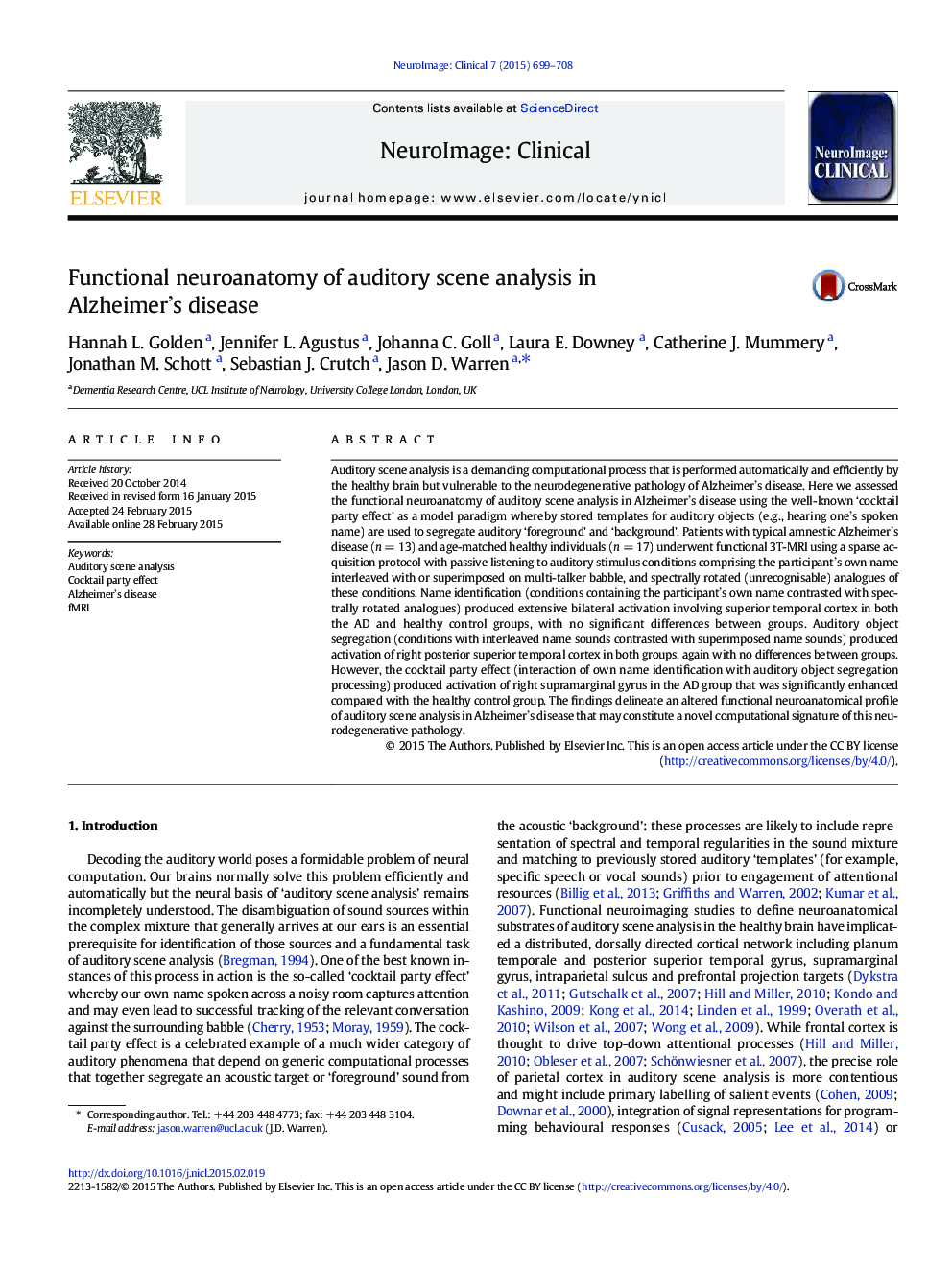| Article ID | Journal | Published Year | Pages | File Type |
|---|---|---|---|---|
| 3075123 | NeuroImage: Clinical | 2015 | 10 Pages |
•Auditory scene analysis is affected in Alzheimer's disease (AD) but little studied.•We addressed this using fMRI of the ‘cocktail party effect’ in AD vs older controls.•Relative to controls, AD patients showed enhanced activation of supramarginal gyrus.•Auditory scene analysis is a new, informative probe of brain network function in AD.
Auditory scene analysis is a demanding computational process that is performed automatically and efficiently by the healthy brain but vulnerable to the neurodegenerative pathology of Alzheimer's disease. Here we assessed the functional neuroanatomy of auditory scene analysis in Alzheimer's disease using the well-known ‘cocktail party effect’ as a model paradigm whereby stored templates for auditory objects (e.g., hearing one's spoken name) are used to segregate auditory ‘foreground’ and ‘background’. Patients with typical amnestic Alzheimer's disease (n = 13) and age-matched healthy individuals (n = 17) underwent functional 3T-MRI using a sparse acquisition protocol with passive listening to auditory stimulus conditions comprising the participant's own name interleaved with or superimposed on multi-talker babble, and spectrally rotated (unrecognisable) analogues of these conditions. Name identification (conditions containing the participant's own name contrasted with spectrally rotated analogues) produced extensive bilateral activation involving superior temporal cortex in both the AD and healthy control groups, with no significant differences between groups. Auditory object segregation (conditions with interleaved name sounds contrasted with superimposed name sounds) produced activation of right posterior superior temporal cortex in both groups, again with no differences between groups. However, the cocktail party effect (interaction of own name identification with auditory object segregation processing) produced activation of right supramarginal gyrus in the AD group that was significantly enhanced compared with the healthy control group. The findings delineate an altered functional neuroanatomical profile of auditory scene analysis in Alzheimer's disease that may constitute a novel computational signature of this neurodegenerative pathology.
